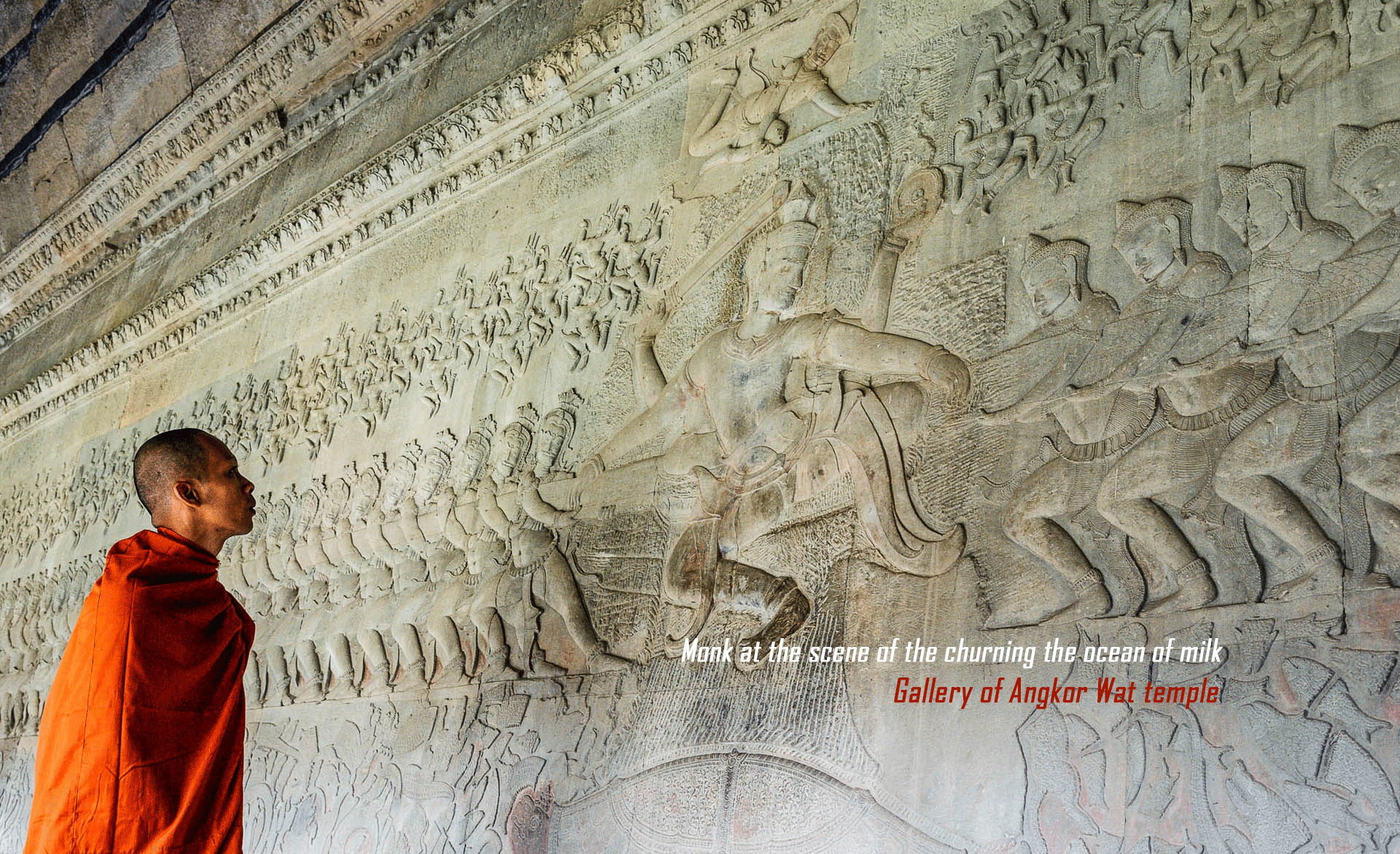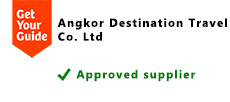
Practical information
Angkor Destination Travel is your leading travel partner in Cambodia for affordable luxury travel services. We are a local tour operator and service provider with a renowned reputation for any kind of trip, from leisure to business and from small to big groups.
Access to Cambodia
There are two main International Airports, one in Phnom Penh and another one in Siem Reap, both have been developed and improved for their maximum capacity and provided full services for passengers on both international and domestic flights.
Airports
There are three major airports in Cambodia for both domestic and international flights.
- Phnom Penh International Airportis the main hub for visitors to Cambodia, with both domestic and international flights operating from this airport. A new bigger airport is planned to open in 2025.
- Siem Reap-Angkor International Airport (SAI) is currently the biggest airport in Cambodia and is being used for both international flights and domestic routes.
- Sihanoukville International Airport is the third biggest airport of Cambodia, located on the South Coast. It mostly operates domestic flights to Siem Reap and Phnom Penh, with a few international connections.
Land borders
Besides air travel, visitors can also enter the country through one of its land border crossings with Thailand, Vietnam and Laos.
- Poipet/Aranya Prathet border crossing
This is the most popular border crossing between Cambodia and Thailand for tourists. It is 148km west of Siem Reap. - Cham Yeam/Hat Lek border crossing
This busy land border enables visitors to travel between Cambodia’s South Coast and the beaches of Thailand. The border is 8km north of Koh Kong. - Choam/Chong Sa-Ngam border crossing
This remote border crossing between Cambodia and Thailand is near Anlong Veng and 139km north of Siem Reap. - Bavet-Moc Bai border crossing
This is the main international border crossing between Cambodia and Vietnam, connecting the Cambodian capital Phnom Penh with Ho Chi Minh City. - Trapeang Kriel/Nong Nok Khiene border crossing:
This remote border crossing between Cambodia and Laos is 65km north of the Cambodian town Stung Treng and connects it with Pakse and Don Det in Laos.
Port
The port of Sihanoukville is mainly used for cargo, but it also accommodates cruise ships. Most ships arrive in the early morning and leave in the evening, allowing travellers to discover a full day on Cambodia’s South Coast.
Visa requirements
Most visitors to Cambodia need a visa to enter the country. One-month tourist visas cost US$30 and are available on arrival at both airports and land borders. Pre-arranged e-visas are available for US$37 at evisa.gov.kh, but these are not accepted at all land borders. For longer stays, visitors need an ordinary business visa, which costs US$37. Visitors from ASEAN countries are exempted from the visa requirements.
Time zone
Cambodia is in the Indochina time zone, which is plus seven hours from the GMT-UTC time.
Electricity
In Cambodia you can use the following types of plugs:
– Japanese plug with two parallel flat blades. (type A, 120V/60Hz)
– European plug with two circular metal pins. (type C, 220V/50Hz)
SIM cards and wi-fi
Roaming charges in Cambodia are usually quite high. It is therefore recommended to buy a local SIM card, since local data packages are extremely cheap. Tourist SIM cards are available for free at international airports. The country code is 855, while the emergency number is 117.
Free wi-fi is available at all international airports in Cambodia. At land borders there is usually no wi-fi service, but as in the rest of the country you can usually find a cafe or restaurant offering free wi-fi.
Vaccination
For information on required and recommended vaccinations, please consult with your local doctor and/or travel clinic at least 6 weeks before your departure.
Health
Visitors to Cambodia should always have a medical insurance. Especially in the provinces, healthcare is very basic and even in major hospitals they may not always be able to treat serious injuries and illnesses. Evacuations to Bangkok may therefore be necessary. Without an insurance, this will cost about US$20,000.
The most important rule when it comes to health is to never drink the tap water. Also be careful with ice, although this is usually produced in factories due to the country’s French legacy. It can be rewarding to bring water-purification devices or tablets. Bottled water is widely available as well. To reduce your environmental impact, you can buy larger bottles and pour the water into a reusable water bottle.
Mosquitoes in Cambodia may carry many potentially fatal diseases, like malaria, dengue fever and more. In most cases, itchy bites will be the worst impact, which can be avoided by using mosquito repellent and wearing long-sleeved, light-coloured clothing at night. Dengue fever is common across the country in the wet season, while malaria is present on the Thai border and the southern islands.
When you need prescription drugs, always buy these from reliable pharmacies or clinics as fake medication is a real problem in the country. Never take recreational drugs in the country, not only is this illegal, but the drugs are often polluted with toxic substances, like mercury or lithium.
When visiting remote areas in the country, always stay on well-marked paths. Mines are still a big problem in the country due to the civil war in the 1980s. The problem is worst in the Thai border area, but the problem exists in most of the country.
Climate
Cambodia is a year-round destination, even though most visitors come during the winter months to avoid the rainy season.
Cambodia’s climate can be classified as hot year-round, as the temperature rarely drops below 30°C during the day, although there have been cases of the temperature dropping to 15°C in the winter months. There are three distinct seasons: the cool and windy season (November to February), the dry and hot season (March to May) and the wet season (June to October). Most visitors avoid the wet season, but it usually only rains briefly every day during this period, while the flourishing landscape turns vibrant green with young rice. If there are any months to avoid, it might be the sweltering heat of May or the intense rains of September.
Clothing
Casual lightweight and loose-fitting clothing is the best option for Cambodia, especially cotton and linen are good options against the country’s humidity. There is no need to bring smart clothes, unless you are planning to live the high life in Phnom Penh and Siem Reap.
If you’re visiting the northeastern provinces of Mondulkiri and Ratanakiri or the Cardamom Mountains during the winter months (November to March), you might want to pack a jacket or sweater for the cool nights.
Beachwear is only to be worn on the beach. It is considered inappropriate to walk around in swimwear on the South Coast, when not on the beach. Cover yourself up with a sarong or something else. Nude bathing is definitely a no go as well on public beaches in the country.
Foods & Drinks
Even though Cambodian cuisine often overlooked internationally, the food is often one of the highlights of a visit to the country.
Cambodian cuisine is closely related to the cuisines of its neighbours, but it is less spicy than Thai food, and more flavourful than Vietnamese food. Cambodian cuisine is quite special with a great variety of national dishes, some of which are adapted from its neighbours, but with their own unique Cambodian twist, whether you go for spring rolls or curry. International cuisines are widely available in the cities, but in other areas it is mostly limited to Cambodian, Chinese and Vietnamese cuisine.
Cambodia has a rich coffee culture, due to the French legacy. Tea, beer, wine, soft drinks, fresh fruit juices and some exotic spirits are also widely available, with tea being the national drink and beer being a close second.
Manners
Greet people the traditional way with the sompiah. This is a local greeting, where you put your hands together in a prayer-like way and bow.
For temple visits, visitors are required to cover to their knees and elbows, remove their shoes and any head covering. It is not considered acceptable for women to touch a monk.
Don’t get into a public argument with Khmer people as they do not want to lose face.


